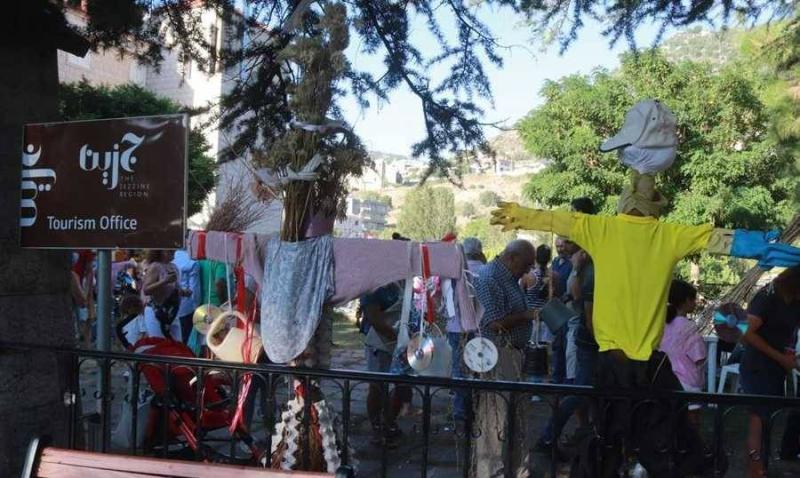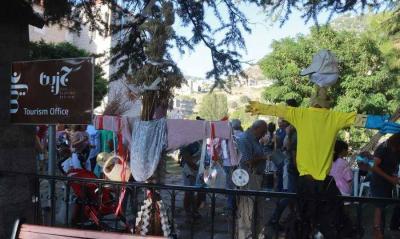As part of the summer festivals organized by the municipality of Juzin – Ain Majdalyin, a artistic event was held in the Maneshia Park opposite the municipal building to elect the most beautiful and best scarecrow. Eighteen local residents participated in the competition announced by the municipality under certain conditions. The event was attended by the mayor Khalil Harfouch, the initiator of the contest Zeina Asmar, and the members of the judging committee, consisting of Paul Abou Rached (President of the Earth Association - Lebanon), François Halou, Rita Abou Nader (Juzin Municipality), and Issam Bou Rached (beekeeping expert), along with the participants involved in making and creating the scarecrows and a crowd of local residents.
After artistic and dancing performances, the committee members evaluated all the scarecrows, each named after a type of bird or sparrow. As a result of the evaluation and information gathered by the members, the first prize went to scarecrow "Targli" owned by Maroun Halou, the second prize to scarecrow "Abou Beliq" owned by Charbel Ghanem, and the third prize to scarecrow "Hassoun" owned by Celine Bou Rached. The first winner received one hundred fifty US dollars, the second one hundred dollars, and the third fifty dollars. The evaluation of the scarecrows was based on the materials used, design, ability to keep birds away, and finally on creativity and artistic appearance.
Harfouch mentioned to "An-Nahar" that "the significance of organizing this competition and announcing its results lies in the recycled materials used in the scarecrows, coinciding with the launch of a modest project to build a plant for waste treatment at the source. We will distribute two containers to each household, one for organic materials and another for other materials, all of which will be utilized. As for the residues, they will be collected and placed in appropriate locations for proper processing."
It is noted that bird scarecrows placed in fields and crops are an old tradition used by farmers to scare away birds and keep them away from their fruits, especially grapes, figs, mulberries, and similar crops before they ripen. To this day, some still use this simple and easy method, which consists of a human-shaped figure made from old clothes and fabrics fastened to a stick or cane. In recent years, some have introduced modern audio-visual techniques to these scarecrows, adding CDs and empty beverage cans.
Furthermore, the idea's originator Zeina Asmar stated that "the new generation should become acquainted with these customs and learn how to protect their environment and crops without resorting to chemicals and toxins that threaten resident and migratory birds, thus ensuring human production and safety."




